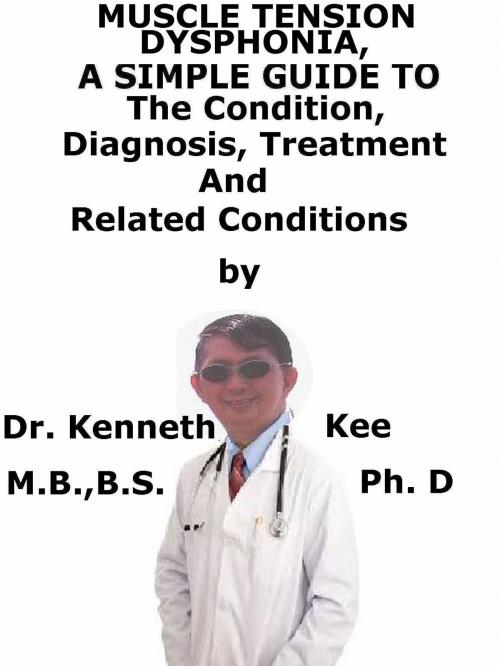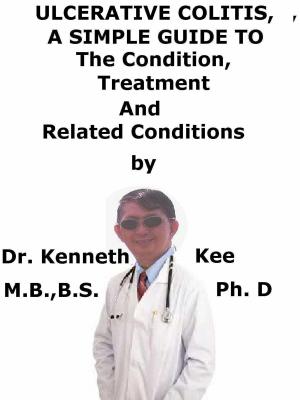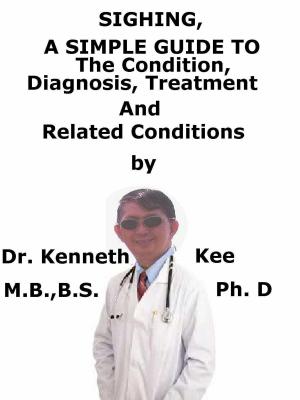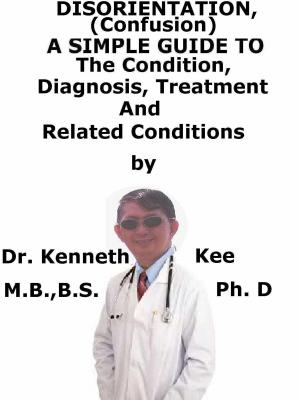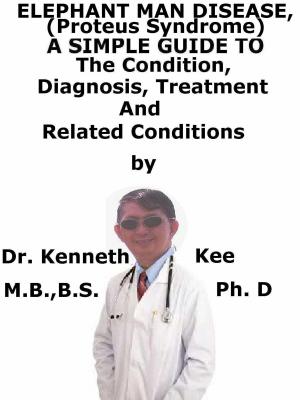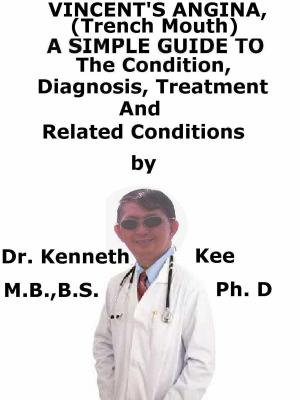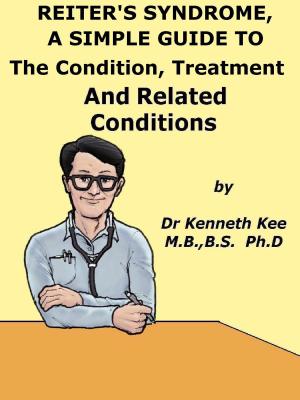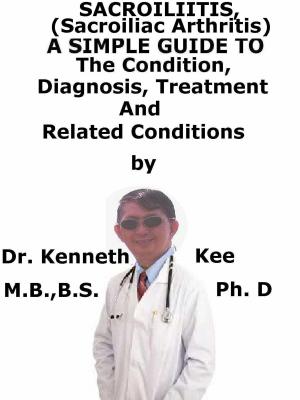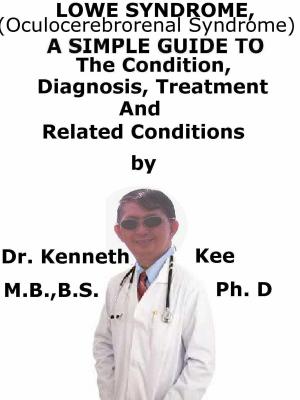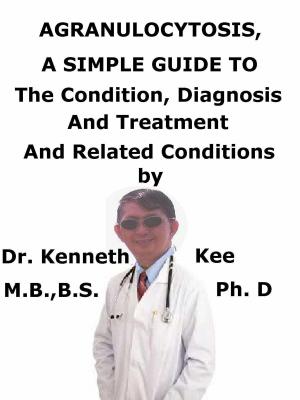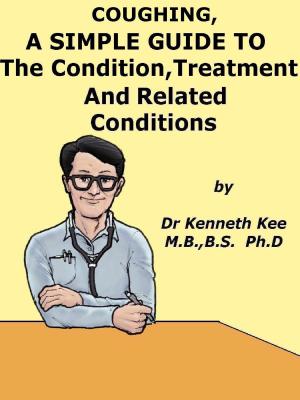Muscle Tension Dysphonia, A Simple Guide To The Condition, Diagnosis, Treatment And Related Conditions
Nonfiction, Health & Well Being, Health, Ailments & Diseases, Hearing, Medical, Specialties, Otorhinolaryngology| Author: | Kenneth Kee | ISBN: | 9781370817009 |
| Publisher: | Kenneth Kee | Publication: | June 23, 2017 |
| Imprint: | Smashwords Edition | Language: | English |
| Author: | Kenneth Kee |
| ISBN: | 9781370817009 |
| Publisher: | Kenneth Kee |
| Publication: | June 23, 2017 |
| Imprint: | Smashwords Edition |
| Language: | English |
Muscle Tension Dysphonia is an extreme tightness or imbalance of the muscles in and around the vocal box leading to hoarseness and difficulty in using the voice.
The muscle tension dysphonia is a disorder for an imbalance in the coordination of the muscles and breathing patterns required to create voice.
This imbalance can be observed without any anatomical anomaly (primary MTD) or in the presence of an anatomical anomaly (secondary MTD).
In the case of secondary MTD, the muscle tension is thought to be the body’s natural compensatory process to adapt to the vocal injury.
Primary MTD can be related to stress and anxiety.
Recently it has been shown that under periods of stress the muscles that control the voice box become tense.
Periods of prolonged muscle tension in the voice box can result in an in-coordination of the vocal control system.
Muscle Tension Dysphonia often happens after an upper respiratory illness, such the cold or flu.
In the upper respiratory tract infection, the muscular imbalance is not believed to be connected to stress and anxiety.
Any stressful life events (e.g. the loss of a loved one) can cause muscle tension dysphonia as well.
The causes of Muscle Tension Dysphonia are:
1. Direct problem with the use of vocal technique
2. Voice muscle habitual misuse
3. Acid reflux from the stomach or laryngopharyngeal reflux
4. Underlying inflammation of the vocal cord
5. Growth on the vocal cord
6. Neurological disorder affecting the vocal cord
Frequent Symptoms Linked with MTD
1. Hoarse voice
a. Unreliable voice
b. Low, gravely voice
c. Voice breaks
d. Hoarse and rough quality
2. Strained voice
a. Airy or breathy voice
b. Inability to sing
c. Extra force needed for loud voice
d. Vocal symptoms worsen with stress
e. Inconsistent voice
3. Pain or sore throat when talking
4. Vocal fatigue easily
5. Difficulty controlling pitch
Diagnosis:
1. A history of how the voice problem began and an evaluation of voice and speaking behaviors are steps in the diagnosis of primary MTD
2. Speech-Language Pathology Evaluation
Evaluation by a speech-language pathologist is very essential in the diagnosis of muscle tension dysphonia.
Acoustic and aerodynamic measurements are also priceless assessment tools to find out the normal voice and breathing behaviors.
3. Laryngoscopy and Stroboscopy
It is a diagnosis of exclusion; careful examination of the vocal folds is required to exclude anatomical abnormalities.
Flexible laryngoscopy permits the doctors to observe some muscular patterns during speaking.
Videostroboscopy can help to view the vocal cords and permit the examiner to evaluate the mucosal wave as a marker for vocal fold vibration.
4. CT or MRI Scanning of skull from nose to vocal box to look for underlying causes.
5. Investigation for Other Linked Abnormalities
The diagnostic process should also direct on looking for important linked factors, such as:
a. Laryngopharyngeal reflux
b. Allergies
c. Side effects of medications (e.g., diuretics and antihistamines)
d. Hormonal Imbalance
Treatment:
Speech therapy is the best standard treatment for primary MTD.
Speech therapy assists the patient to improve vocal symptoms through exercises and techniques geared at improving the way the body (muscles, lungs etc.) work together to create voice:
2. Behavioral Counseling
In cases of primary MTD linked with stress or anxiety, it can be very useful for the patient to work with a counselor to decrease stress besides completing voice therapy.
3. Medicine to treat acid laryngopharyngeal reflux
TABLE OF CONTENT
Introduction
Chapter 1 Muscle Tension Dysphonia
Chapter 2 Causes
Chapter 3 Symptoms
Chapter 4 Diagnosis
Chapter 5 Treatment
Chapter 6 Prognosis
Chapter 7 Laryngitis
Chapter 8 Laryngopharyngeal Reflux
Epilogue
Muscle Tension Dysphonia is an extreme tightness or imbalance of the muscles in and around the vocal box leading to hoarseness and difficulty in using the voice.
The muscle tension dysphonia is a disorder for an imbalance in the coordination of the muscles and breathing patterns required to create voice.
This imbalance can be observed without any anatomical anomaly (primary MTD) or in the presence of an anatomical anomaly (secondary MTD).
In the case of secondary MTD, the muscle tension is thought to be the body’s natural compensatory process to adapt to the vocal injury.
Primary MTD can be related to stress and anxiety.
Recently it has been shown that under periods of stress the muscles that control the voice box become tense.
Periods of prolonged muscle tension in the voice box can result in an in-coordination of the vocal control system.
Muscle Tension Dysphonia often happens after an upper respiratory illness, such the cold or flu.
In the upper respiratory tract infection, the muscular imbalance is not believed to be connected to stress and anxiety.
Any stressful life events (e.g. the loss of a loved one) can cause muscle tension dysphonia as well.
The causes of Muscle Tension Dysphonia are:
1. Direct problem with the use of vocal technique
2. Voice muscle habitual misuse
3. Acid reflux from the stomach or laryngopharyngeal reflux
4. Underlying inflammation of the vocal cord
5. Growth on the vocal cord
6. Neurological disorder affecting the vocal cord
Frequent Symptoms Linked with MTD
1. Hoarse voice
a. Unreliable voice
b. Low, gravely voice
c. Voice breaks
d. Hoarse and rough quality
2. Strained voice
a. Airy or breathy voice
b. Inability to sing
c. Extra force needed for loud voice
d. Vocal symptoms worsen with stress
e. Inconsistent voice
3. Pain or sore throat when talking
4. Vocal fatigue easily
5. Difficulty controlling pitch
Diagnosis:
1. A history of how the voice problem began and an evaluation of voice and speaking behaviors are steps in the diagnosis of primary MTD
2. Speech-Language Pathology Evaluation
Evaluation by a speech-language pathologist is very essential in the diagnosis of muscle tension dysphonia.
Acoustic and aerodynamic measurements are also priceless assessment tools to find out the normal voice and breathing behaviors.
3. Laryngoscopy and Stroboscopy
It is a diagnosis of exclusion; careful examination of the vocal folds is required to exclude anatomical abnormalities.
Flexible laryngoscopy permits the doctors to observe some muscular patterns during speaking.
Videostroboscopy can help to view the vocal cords and permit the examiner to evaluate the mucosal wave as a marker for vocal fold vibration.
4. CT or MRI Scanning of skull from nose to vocal box to look for underlying causes.
5. Investigation for Other Linked Abnormalities
The diagnostic process should also direct on looking for important linked factors, such as:
a. Laryngopharyngeal reflux
b. Allergies
c. Side effects of medications (e.g., diuretics and antihistamines)
d. Hormonal Imbalance
Treatment:
Speech therapy is the best standard treatment for primary MTD.
Speech therapy assists the patient to improve vocal symptoms through exercises and techniques geared at improving the way the body (muscles, lungs etc.) work together to create voice:
2. Behavioral Counseling
In cases of primary MTD linked with stress or anxiety, it can be very useful for the patient to work with a counselor to decrease stress besides completing voice therapy.
3. Medicine to treat acid laryngopharyngeal reflux
TABLE OF CONTENT
Introduction
Chapter 1 Muscle Tension Dysphonia
Chapter 2 Causes
Chapter 3 Symptoms
Chapter 4 Diagnosis
Chapter 5 Treatment
Chapter 6 Prognosis
Chapter 7 Laryngitis
Chapter 8 Laryngopharyngeal Reflux
Epilogue
